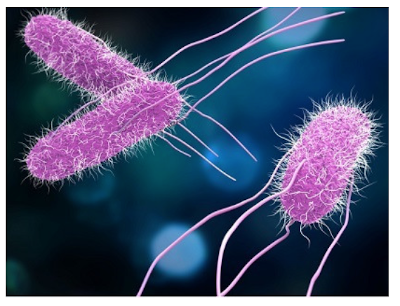The term Salmonella refers to a specific group of gram-negative bacteria with the potential to cause gastrointestinal distress and other illness (i.e. salmonellosis) in humans.
 Salmonellae are widely distributed in nature and are found in the intestinal tract of wild and domesticated animals and in humans. Salmonella poisoning can occur when a person ingests contaminated fecal particles transmitted by another infected human or animal. Salmonella enterica serotypes Typhi, Sendai, and Paratyphi A, B, or C, collectively referred to as typhoidal Salmonella, cause enteric fever.
Salmonellae are widely distributed in nature and are found in the intestinal tract of wild and domesticated animals and in humans. Salmonella poisoning can occur when a person ingests contaminated fecal particles transmitted by another infected human or animal. Salmonella enterica serotypes Typhi, Sendai, and Paratyphi A, B, or C, collectively referred to as typhoidal Salmonella, cause enteric fever.
Most Salmonella infections are caused by eating contaminated food. One study found that 87% of all confirmed cases of Salmonella are foodborne. Foods of animal origin, including meat, poultry, eggs, or dairy products can become contaminated with Salmonella. Eating uncooked or inadequately cooked food—or food cross contaminated with uncooked or undercooked products—can lead to human infections. In the past two decades, consumption of produce, especially sprouts, tomatoes, fruits, leafy greens, nuts, and nut butters, has been associated with Salmonella illnesses.
Salmonella infections can have a broad range of illness, from no symptoms to severe illness. The most common clinical presentation is acute gastroenteritis. Symptoms include diarrhea and abdominal cramps, often accompanied by fever of 100°F to 102°F (38°C to 39°C), which develop after an incubation period of between 6 to 72 hours. Other symptoms may include bloody diarrhea, vomiting, headache and body aches. Reactive arthritis can develop after a Salmonella infection, as can irritable bowel syndrome and other functional gastrointestinal disorders such as constipation, heartburn, and acid reflux.